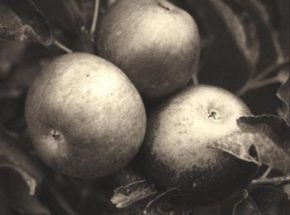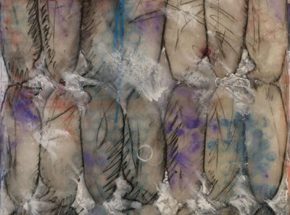

Victor Schrager has devoted himself to still life photography for over thirty years. When he began, the genre was seen as peripheral, but Schrager wanted to restore its relevance and he was quickly successful. He was included in the Whitney Biennial’s first photography section, in 1981, and he has since exhibited throughout the world and published several books.
Schrager initially turned to still life as a way to sift different categories of image – an approach he describes as “composing with information.” His photographs became archaeologies of the high and low, showing us glimpses of texts, reproductions from books, and small objects bearing decoration and information. Most of that early work was executed in color, but in the 1990s he moved towards black and white. The Botany series (1999-2000) concentrated on plants and flowers, books now serving as the back drop for much more richly present depictions of nature. Throughout the late 1990s he worked on a project to photograph 100 species of North American birds, an endeavor which culminated in the publication of The Bird Hand Book (Graphis, 2001), with a text by A.S.Byatt. Labeling each platinum print with the bird’s common name, Schrager invoked the work of Audubon and other early naturalists. Yet instead of being displayed in their natural habitat, each bird is secured before a slashed fabric scrim, and perched in the hand of an ornithologist, creating a dialogue between human hands and avian form.
In recent years Schrager has returned to some of the concerns in his early work (and also returned to color), but he has reversed his earlier approach of “composing with information,” and decided to withhold rather than reveal. In the series Composition as Explanation (Steidl/ Edwynn Houk Gallery, 2006) he restricted himself to depicting nothing but the covers of a selection of old hardback books. And in The White Room (2008-9) he employed a variety of everyday objects ranging from light bulbs to bars of soap and bottles of luridly colored mouthwash. In both series the objects cede their identity and become elements in studies of light, color, and space. “The objects are as necessary and irrelevant as Morandi’s pitchers, Stieglitz’s clouds, Cezanne’s fruit, Weston’s peppers, or Penn’s frozen food,” Schrager says. “The real purpose in taking these pictures is addressing the box of space that sits in front of me, and seeing if it is once again possible to pull a compelling picture out of it.”
Victor Schrager lives and works in New York. Educated at Harvard, he has been a recipient of fellowships from the Guggenheim Foundation, the MacDowell Colony, and the National Endowment for the Arts. His work is in the collections of the Museum of Modern Art New York; the Metropolitan Museum of Art, New York; the Whitney Museum of Art, New York; and the San Francisco Museum of Modern Art.
www.houkgallery.com/artists/victor-schrager/
Website
http://www.victorschrager.com

